Rare Rides Icons: The History of Imperial, More Than Just a Car (Part XV)

We return to the Imperial’s saga once again today, at a very low point for the brand. Though the Fuselage Look of 1969 had propped up Imperial’s sales and generated consumer interest, sales were in decline after the ’69s debut. Chrysler put less and less money into its flagship, as parts sharing increased while options and trims did the opposite. There was a second version of the Fuselage Look for 1972 that showed as longer, lower, and heavier than ever before. And though the new metal buoyed sales slightly, the U.S. car market as a whole saw record sales in 1972 and 1973. 1973 was the last such record year for America, and it coincided with the last Fuselage Imperial. Chrysler had a decision to make about its flagship brand.
The Imperial’s heady sales figures around 25,000 units in the mid-Sixties had fallen to 16,729 in 1973. Forecasting was bleak and showed a drop in overall auto sales in the U.S. market for the time being. The oil crisis of 1973 hit large, thirsty luxury cars especially hard and made for a lackluster economy. Caught between the proverbial rock and a hard place, Chrysler knew that Imperial’s sales wouldn’t warrant a body style unique to the brand (even if some panels were shared with New Yorker).
While closing up shop and canceling the Imperial entirely would be the affordable and easy option, U.S. market prestige was not so cut and dry. If Chrysler gave up Imperial, it would leave Cadillac and Lincoln to sweep up all the dollars offered by domestic luxury car buyers in the years to come. A brand elimination would also make Chrysler look like the weakest of the Detroit Three, with its most prestigious offering as the New Yorker. Chrysler decided to spare Imperial from death and introduce a new fifth-generation flagship car. They planned to do it big on a budget, not an easy strategy to execute.
The Imperial that arrived for the 1974 model year was yet another remake of the C-body platform Imperial used since 1967. It resided under the other large Chryslers since 1965 and was used on the New Yorker, Town and Country, and Newport, as well as Dodge and Plymouth models. For its new outing, the then-aged Fuselage Look was replaced by something entirely different and more mainstream.
Elwood Engel was still in charge of Chrysler’s design studio, but this time he credited outside assistance for the Imperial’s new front end. Senior designer Chet Limbaugh penned the upright bechromed front clip, and Engel took a liking to it. Engel took it to the president of Chrysler at the time and persuaded that it should become the schnoz of the upcoming Imperial.
Mister president agreed, but there was a concession: Imperial would use the same body panels as the New Yorker in its fifth generation, save for the trunk lid and the front clip. The mighty had fallen, as for the first (and last) time as an independent brand, the Imperial wore the same metal as the positively plebeian New Yorker. Despite this, all “Imperial by Chrysler” badging was reverted to read Imperial. For 1974, advertising returned to a separate brand strategy, as Imperials were not mentioned in Chrysler materials. Perhaps because the New Yorker and much more expensive Imperial looked nearly identical and Chrysler was not eager to highlight that fact.
At the front end, Imperial went without the almost vertical front hood line of the year prior and swapped in a sculpted power bulge design like other domestic cars of the era. The hood no longer pulled over the front edge of the car, but instead had its shut line back a few inches; the Imperial’s front clip edged over onto the hood.
Gone was the Fuselage’s streamlined and inset mesh-style grille with its integrated headlamp doors. In its place was a waterfall grille split into two main sections by body-colored metal. Each main section was further split into four smaller sections, each divided by vertical grille veins. Headlamps were four in number as they had been before, concealed behind flip-up headlamp doors. The Imperial script still appeared on the driver’s side headlamp cover. A hood ornament appeared for the first time in a while and contained the Imperial eagle.
The bumper came to a much more pronounced point than before and had a heavier-handed use of chrome. Federally mandated impact bumpers concealed their energy-absorbing rubber blocks more thoughtfully. The battering ram front corners present for the prior decade went away, replaced by a creased fender look that contained integrated rectangular parking lamps. The lenses were imprinted with the Imperial eagle. The corner lighting was much more conventional than before, and the front end look was decidedly Lincoln Continental. The front side parking lamp grew narrower but taller and moved to a less prominent position lower on the fender.
Fender creases along the front end were softened from their Fuselage prominence, and no longer had chrome trim running their length. The fenders were more integrated into the side of the car and formed a character line that ran above the door handles but under the windows, and ended abruptly at the tail of the car. Handles changed from push-button to a dogleg style and were still fully chromed. At the A-pillar, buyers found chrome trim and a windshield that was much squarer than before.
Vinyl roofing no longer covered the A-pillar but was contained to the roof and rear pillar areas. The vinyl on the 1974 Imperials was used a bit more clumsily than before and looked less integrated due to its additional chrome surrounds. The overall look was taller and more upright than before, with a larger greenhouse. The Fuselage’s rounded window openings were replaced by decidedly more square ones, that came to a point at the back door (sedan) and utilized a separate vent window at the front.
Lower chrome trim along the Imperial’s side moved all the way to the lower rocker panel, and wheel arches became more pronounced. Still present was a fender skirt at the rear, which was now larger than before. Along the lower fender and all along the side of the Imperial, a new character crease appeared. It swept downward ahead of the rear wheel and tucked inward all along the lower edge of the body. Small Imperial script badging returned behind the front wheel, and at the rearmost pillar, an Imperial eagle appeared again. On LeBaron, it was a LeBaron script.
The long double character lines met at a rear end that was not as nicely integrated as before. Along the rear fender, the block Imperial lettering vanished, but the large red running lamp appeared as a carryover. The trunk lid was more pronounced in 1974, almost borrowing the ’73 Imperial’s strong front hood line. The trunk lid itself contained a rather chunky Imperial logo that covered the lock cylinder.
A requisite chrome bumper leaned more into a Cadillac look this year and lost the upswept curve of the 1973 Fuselage. Chrome extended around the brake lamps, which had larger lenses and were more Cadillac-like than the year before. The rear’s rubber impact absorbers were better concealed than before and smaller than the ’73’s.
With a new New-Yorker-Luxe generation C-body ready to go in 1974, Chrysler offered up its last-ditch Imperial effort to consumers. Unfortunately, even with new technology and a new prestigious trim, customers weren’t having it. Imperial dies next in our next installment.
[Images: Chrysler]

Interested in lots of cars and their various historical contexts. Started writing articles for TTAC in late 2016, when my first posts were QOTDs. From there I started a few new series like Rare Rides, Buy/Drive/Burn, Abandoned History, and most recently Rare Rides Icons. Operating from a home base in Cincinnati, Ohio, a relative auto journalist dead zone. Many of my articles are prompted by something I'll see on social media that sparks my interest and causes me to research. Finding articles and information from the early days of the internet and beyond that covers the little details lost to time: trim packages, color and wheel choices, interior fabrics. Beyond those, I'm fascinated by automotive industry experiments, both failures and successes. Lately I've taken an interest in AI, and generating "what if" type images for car models long dead. Reincarnating a modern Toyota Paseo, Lincoln Mark IX, or Isuzu Trooper through a text prompt is fun. Fun to post them on Twitter too, and watch people overreact. To that end, the social media I use most is Twitter, @CoreyLewis86. I also contribute pieces for Forbes Wheels and Forbes Home.
More by Corey Lewis
Latest Car Reviews
Read moreLatest Product Reviews
Read moreRecent Comments
- Ajla IMO, something like this really should be naturally-aspirated.
- Kjhkjlhkjhkljh kljhjkhjklhkjh Unless they are solid state batteries you BAN THEM. I like EVs... but EVs like to burn ... for days
- Kjhkjlhkjhkljh kljhjkhjklhkjh uh .. it looks like a VW golf got the mumps
- Kjhkjlhkjhkljh kljhjkhjklhkjh I CANNOT WAIT FOR SOCIAL SECURITY TO GET GUTTED.. No i am really serious. I am insulated thanks to 24 years at Symantec then Broadcom .. tons of retirement cash. but all the blue hairs and low income trump voters are going to lose benefits and jobs and i get to laugh allllll dayyyyy long in about 2-3 years.. CANNOT WAIT, POPCORN READY.
- Kjhkjlhkjhkljh kljhjkhjklhkjh no. to many '''''americans'''' just want a CUV or SUV according to sales numbers



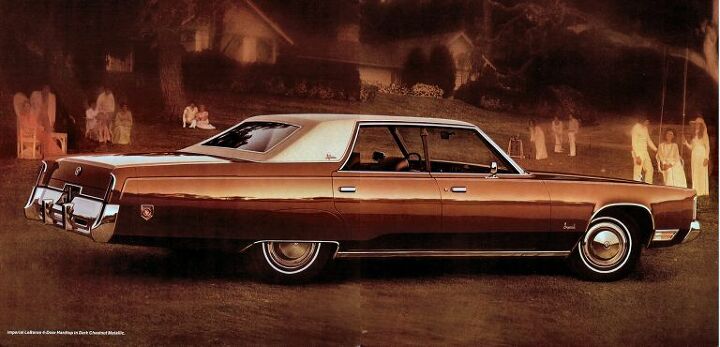






















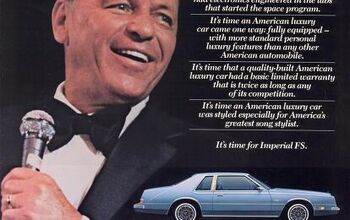
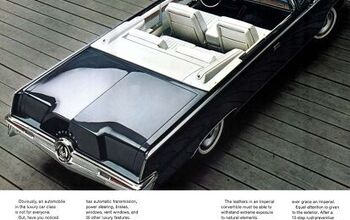
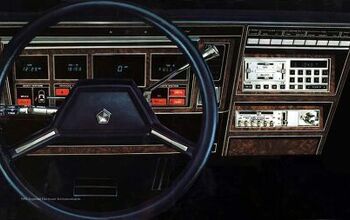
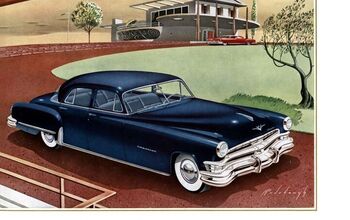
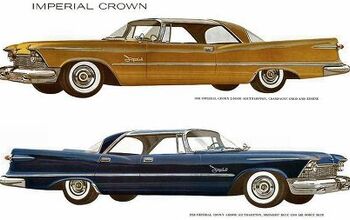










Comments
Join the conversation
Were Chrysler Plymouth dealers have any incentive to "upsell" their customers to Imperial? It seems they could have easily done that for customers who wanted a lot of options on Newport and New Yorker, why not just get an Imperial? Or was it too much of price difference? Oh, and is the next one the Frank Sinatra Imperial?
I have enjoyed your series about the perennial luxury underdog that never got the full attention it deserved. However regarding your comments about the development of the 74 Imperial, they had nothing to do with expectations of poor industry sales and fuel economy concerns. This car was conceived and developed years yearly, and when it entered production in the summer of 73, the industry and America were riding high. The Arab Oil Embargo hit in October of 1973, soon after the rollout of Chrysler’s C-bodies. This started the decline of the full size automobile’s dominance of the US market, the demise of the Imperial, another financial crisis at Chrysler… to name few.